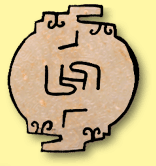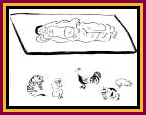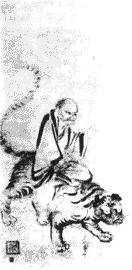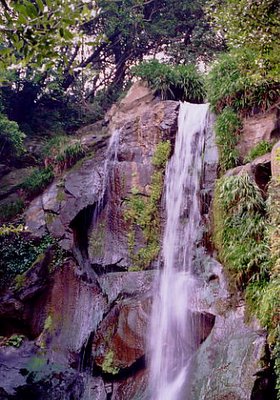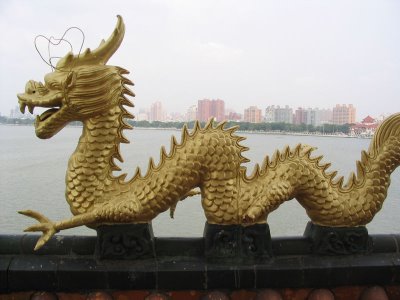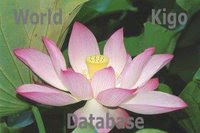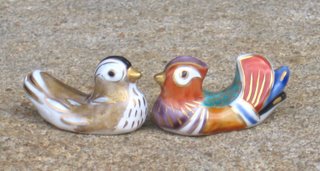[ . BACK to DARUMA Museum TOP . ]:::::::::::::::::::::::::::::::::::::::::::::::::::::::::::::::::::::::::::::::::::::::::::::::::::::
 BACK TO THIS : LINKS to more of my Dragon Art Collection
BACK TO THIS : LINKS to more of my Dragon Art Collection:::::::::::::::::::::::::::::::::::::::::::::::::::::::::::::::::::::::::::::::::::::::::::::::::::::
Altar Cloth in Brocade. Uchishiki
Family Buddhist Altar, Butsudan
http://dragondarumamuseum.blogspot.com/2008/05/altar-cloth.html
Amulets and Talismans
clay bells, ema votive tablets, hariko papermachee dolls . . .
http://omamorifromjapan.blogspot.com/2011/09/tatsu-dragon-info.html
Anchin and Kiyohime. The legend of Dojo-Ji
and then she turned into a dragon ...
http://dragondarumamuseum.blogspot.com/2008/06/anchin-and-kiyohime.html
Belt (obi)
Silk Embroidery and Weaving Patterns
http://dragondarumamuseum.blogspot.com/2006/03/belt-obi.html
Belt Hook
Jade, 19th cent. China
http://dragondarumamuseum.blogspot.com/2006/03/belt-hook.html
Bingata, Dyeing from Okinawa (Ryukyu)
Various types, wall hanger, shirt, stamp and introductory TEXT.
http://dragondarumamuseum.blogspot.com/2006/03/bingata.html
Blue Dragon Hermit. Mamiya Eiju (1871-1945)
Painting of Daruma san
http://dragondarumamuseum.blogspot.com/2006/06/blue-dragon-hermit.html
Bowl, Blue&White , Dragon Design, China
AntiqueTica.com Thailand
http://dragondarumamuseum.blogspot.com/2006/02/bowl-01.html
Calligraphy
by Tesshu Yamaoka Tesshu
http://darumamuseumgallery.blogspot.com/2007/07/dragon-calligraphy.html
Camphor wood carving
ogon kuzu
http://dragondarumamuseum.blogspot.com/2008/06/camphor-wood.html
Carpet, Flying Dragon over Mount Meru, Wanli period,
The Textile Gallery / EXTERNAL LINK
http://www.textile-art.com/tg/16074.html
Carpets, Rugs, from China
CYBER RUG CENTER
http://dragondarumamuseum.blogspot.com/2006/02/carpet-01.html
Ceiling Painting
Kenninji Temple, Kyoto (Kennin-Ji)
http://dragondarumamuseum.blogspot.com/2006/04/ceiling-02.html
Ceiling Painting, with LIST to all Nari-Ryuu
Meguro Fudo Temple, Tokyo.
http://dragondarumamuseum.blogspot.com/2006/03/ceiling-painting.html
Ceiling painting at Koya san
<第三十六番 高野山 南院>
http://fudosama.blogspot.com/2005/02/kinki-pilgrimage.html
Chinese Dragons
Roof Dragons and many more, link to Wikimedia
http://dragondarumamuseum.blogspot.com/2006/01/chinese-dragons-03.html
Chinsee character (kanji)
taito, with 84 strokes, dragon and clouds
http://dragondarumamuseum.blogspot.com/2009/05/chinese-character-taito.html
Clappers (hyooshigi)
From a Zen Temple in Takahashi, Japan
http://dragondarumamuseum.blogspot.com/2006/02/clappers.html
Clouds and Dragon, Unryuu
also BANKIN, sheet metal work
http://dragondarumamuseum.blogspot.com/2008/03/clouds-and-dragon.html
Clouds, Dragon riding Clouds
Celadon and embroidery
http://dragondarumamuseum.blogspot.com/2009/04/nine-dragons-and-clouds.html
Door Stucco Sculptures
Katsuyama, Japan. Two Dragons and Two Lions.
http://dragondarumamuseum.blogspot.com/2006/12/door-sculptures.html
Double Dragon
YOM CHI TAEKWON-DO
http://dragondarumamuseum.blogspot.com/2006/06/double-dragon-01.html
Doucai Dragon Bowls
http://dragondarumamuseum.blogspot.com/2006/10/doucai-dragon-bowls.html
Dragon Wheel, dragon vehicle (ryuusha, ryusha)
Part of a Pagoda Final Decoration (soorin)
http://dragondarumamuseum.blogspot.com/2007/03/dragon-wheel-ryuusha.html
Dragonboat Race Nanaimo
Canada 2006. Poem by Angelika Kolompar
http://dragondarumamuseum.blogspot.com/2006/07/dragonboat-race-nanaimo.html
Dragons and Lotus Blossoms
Vietnamese Ceramics from the Birmingham Museum of Art
http://dragondarumamuseum.blogspot.com/2011/12/dragons-and-lotus-blossoms.html
Flagstaff
Gilt Bronze Dragon Head, Korea
http://dragondarumamuseum.blogspot.com/2006/03/flagstaff.html
Flower : Silver Dragon Flower
Monotropastrum globosum
http://dragondarumamuseum.blogspot.com/2006/06/silver-dragon-flower.html
Flute, Dragon flute - ryuuteki, ryuteki
gagaku court music and flutes
http://haikutopics.blogspot.com/2006/11/flute-fue.html
Glass Art Dragon Figures
From Thailand. Buddhist Artwork Com
http://dragondarumamuseum.blogspot.com/2006/07/glass-art.html
Hidden Dragon
The Chief Priest of Wudang Mountain. an interview
http://dragondarumamuseum.blogspot.com/2006/06/hidden-dragon.html
Hokusai, Katsushika Hokusai (1760・849)
Paintings, Woodblocks
http://dragondarumamuseum.blogspot.com/2006/03/hokusai.html
Incense Burner, Japanese Dragon motif, Silver
Hiro Antiques Sapporo, Japan
http://dragondarumamuseum.blogspot.com/2006/02/incense-burner-02.html
Incense Burner, Japanese Hirado Celadon Miniature
Alexander Fine Art
http://dragondarumamuseum.blogspot.com/2006/02/incense-burner.html
Incense Container, Red Oribe Pottery
By Kato Juemon
http://dragondarumamuseum.blogspot.com/2006/02/incense-container-01.html
Incense Stick Holder, Blue and White, China
AntiqueTica.com Thailand
http://dragondarumamuseum.blogspot.com/2006/02/incense-stick-holder-01.html
Jar, Blue and White, China TNM
Tokyo National Museum
http://dragondarumamuseum.blogspot.com/2006/02/jar-01.html
Kowloon, the legend of nine dragons
Hongkong
http://dragondarumamuseum.blogspot.com/2009/04/nine-dragons-and-clouds.html
LUCKY DRAGON. Atomic Fallout Tragedy
Daigo Fukuryumaru (the Fifth Lucky Dragon)
http://darumamuseumgallery.blogspot.com/2007/06/fifth-lucky-dragon.html
Legend : Minuma Dragon God, Japan
http://dragondarumamuseum.blogspot.com/2006/09/minuma-dragon-god.html
Moon Flasc, Doucai ceramic
http://dragondarumamuseum.blogspot.com/2006/10/doucai-dragon-bowls.html
Museum Dingling
Dragon robe, dragon crown of Emperor Shenzong of the Ming Dynasty (1368-1644) and his two empresses.
http://dragondarumamuseum.blogspot.com/2006/09/dingling-museum.html
Name plate, nameplate, Hyoosatsu, Hyosatsu
from wood, also some with Daruma
http://darumamuseum.blogspot.com/2008/06/hyoosatsu.html
Nichiren Dragon Legends
The 7 headed dragon & Kishimo Daimoku
http://dragondarumamuseum.blogspot.com/2006/03/nichiren.html
Oil Lamp, Porcelain
Hongwu period
http://dragondarumamuseum.blogspot.com/2006/07/oil-lamp.html
Painting : Kitamuki Unchiku, Calligrapher
Dragon and Tiger,
http://dragondarumamuseum.blogspot.com/2008/07/kitamuki-unchiku.html
Painting, Maruyama Okyo
from: MFA Boston, William Sturgis Bigelow Collection
http://dragondarumamuseum.blogspot.com/2006/04/soga-shohaku.html
Panel : Tiger and Dragon, China
Asianart.com
http://dragondarumamuseum.blogspot.com/2006/02/tiger-and-dragon.html
Panel, open carving (ranma) with Dragon
Welcome To Another Century New York City
http://dragondarumamuseum.blogspot.com/2006/02/panel-ranma.html
Park Encho En in Tottori, Japan
Chinese Park with many Dragon pieces
http://dragondarumamuseum.blogspot.com/2006/10/encho-en-chinese-park.html
Pillow
Freer and Sackler Galleries
http://dragondarumamuseum.blogspot.com/2006/03/pillow.html
Pond: White Dragon Pool
Yuyao, China Nature
http://dragondarumamuseum.blogspot.com/2006/07/white-dragon-pool-yuyao.html
Ring, Silver, India Including an article about Dragon Jewelery
Dragon Lore, Naga Raja, Ryuu-Oo
http://fudosama.blogspot.com/2005/08/dragon-lore.html
Roof Dragons
from various temples in Japan
http://dragondarumamuseum.blogspot.com/2006/02/roof.html
Roof tile 01
"Carp Leaping form Dragon Gate"
http://dragondarumamuseum.blogspot.com/2006/06/roof-tile-01.html
Seal of the Fifth Dalai Lama, Tibet
Himalayan Art
http://dragondarumamuseum.blogspot.com/2006/02/seal-01.html
Seal, Soapstone, China
Hawkes, Asian Art United Kingdom
http://dragondarumamuseum.blogspot.com/2006/02/seal-02.html
Shadow Picture Art
Hachiroota, Nansoo-Boo and the Dragon of Lake Towadakoo
http://dragondarumamuseum.blogspot.com/2006/08/utsushi-e.html
Silk Dragons, Dragons of Silk
Exhibition
http://darumamuseumgallery.blogspot.com/2007/05/dragons-of-silk.html
Soga Shohaku, Painter
Various of his Dragons
http://dragondarumamuseum.blogspot.com/2006/04/soga-shohaku.html
Stone Garden at Temple Tofukuji (Toofuku Ji)
by Gardener Shigemori Mirei
http://darumamuseumgallery.blogspot.com/2007/06/kare-sansui.html
Sword Decoration
Tsuba Gilt Bronze Dragon
http://dragondarumamuseum.blogspot.com/2006/03/sword-decoration.html
Takada Keihoo, Painter
Ceiling paintings, Daruma ...
http://dragondarumamuseum.blogspot.com/2006/04/takada-keihoo.html
Tatsumi Inari Shrine, Kyoto
Woodblock Print by J. Rome
http://dragondarumamuseum.blogspot.com/2006/06/tatsumi-inari.html
Tea from China, Dragon Well Tea
http://dragondarumamuseum.blogspot.com/2008/05/dragon-well-tea.html
Teapots and Cups samples - teacup (chawan 茶碗)
Imperial Tea Court Company, S.Francisco
http://dragondarumamuseum.blogspot.com/2006/02/teapots-01.html
Tray, Mother of Pearl, China TNM
Tokyo National Museum
http://dragondarumamuseum.blogspot.com/2006/02/tray-01.html
Vase for Temple Flowers, Bronze
Kodo Arts
http://dragondarumamuseum.blogspot.com/2006/02/vase-01.html
Vase, Blue and White Porcelain, Red Dragons
Freer and Sackler Galleries
http://dragondarumamuseum.blogspot.com/2006/03/vase-02.html
Vase, Huaihaitang Collection
Ethereal Elegance: Exhibition 2008
http://dragondarumamuseum.blogspot.com/2008/03/vase-03.html
Woodblock Print
Yoshitoshi, Mt. Minobu
http://dragondarumamuseum.blogspot.com/2006/03/woodblock-yoshitoshi.html
BACK TO THIS : LINKS to more of my Dragon Art Collection:::::::::::::::::::::::::::::::::::::::::::::::::::::::::::::::::::::::::::::::::::::::::::::::::::::
[ . BACK to WORLDKIGO . TOP . ][ . BACK to DARUMA MUSEUM TOP . ]:::::::::::::::::::::::::::::::::::::::::::::::::::::::::::::::::::::::::::::::::::::::::::::::::::::


